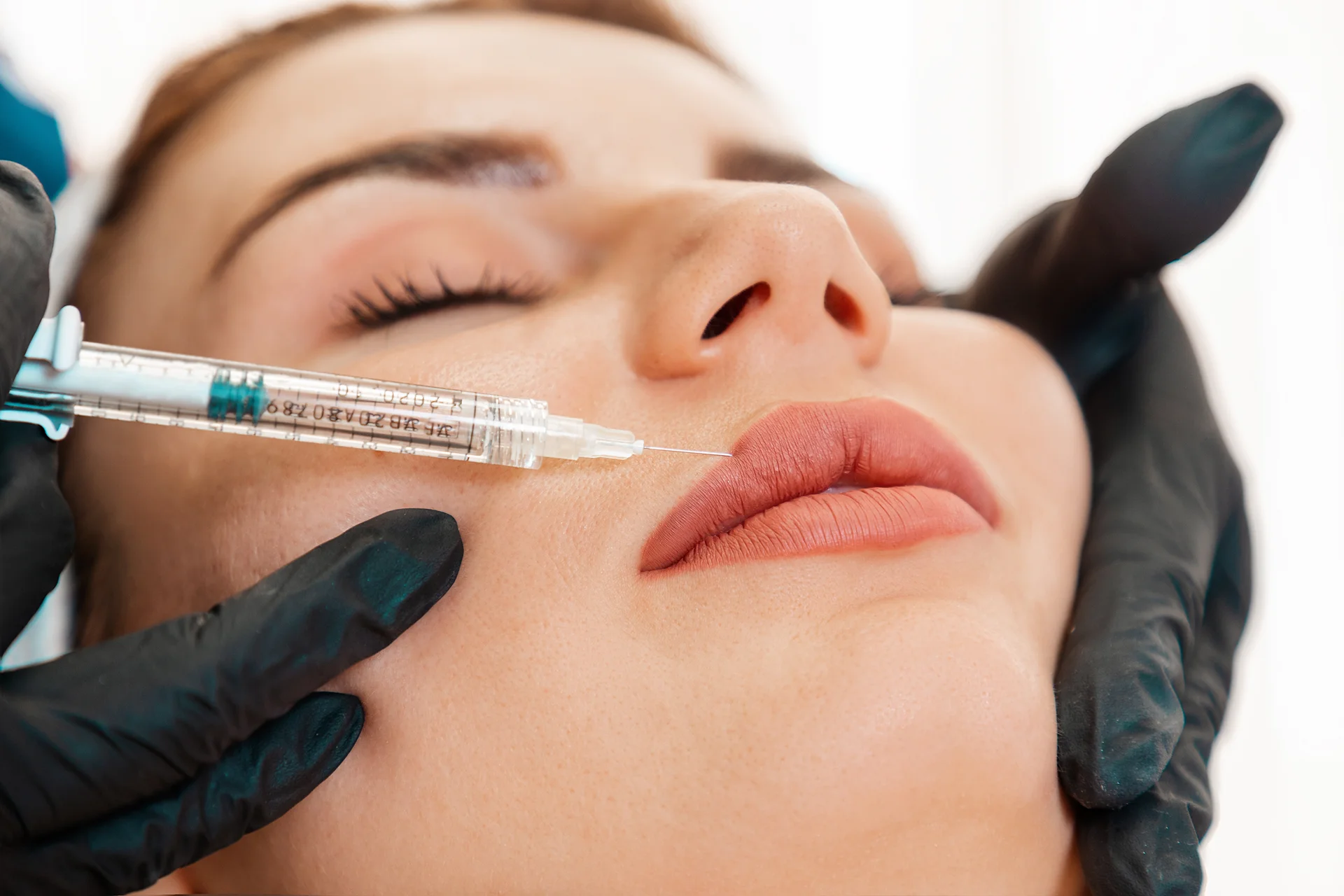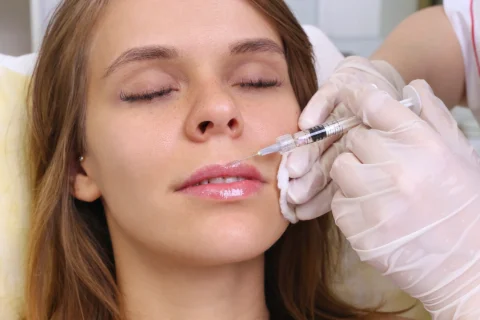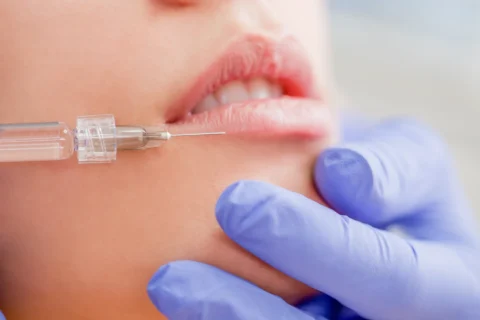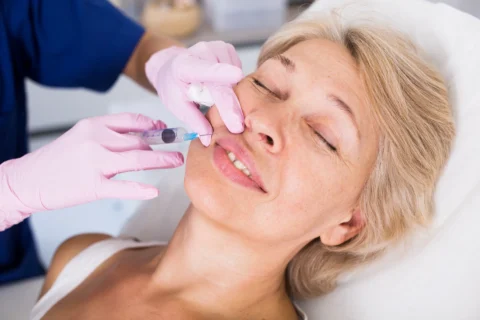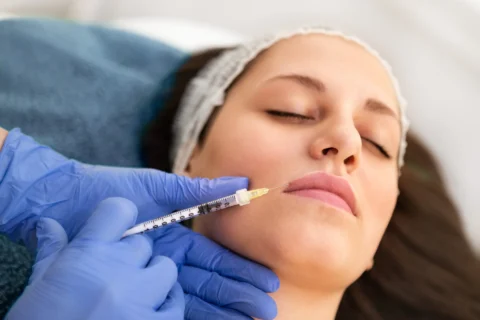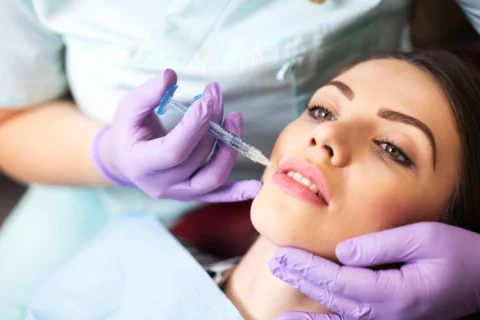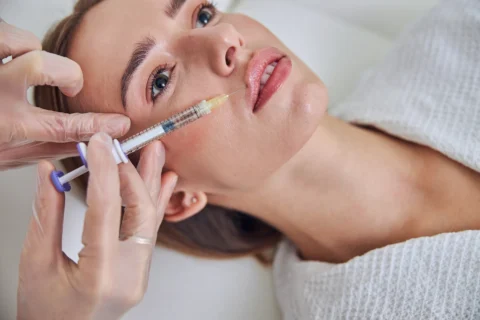Lip Fillers and Post-Procedure Care: Keeping Swelling at Bay with Arnica
Lip fillers, as their name implies, are substances injected into the lips to increase their volume, shape, or symmetry. They’ve gained tremendous popularity in the world of cosmetic enhancements, primarily because they offer a quick path to fuller, plumper lips without the permanence of surgery.
Now, after deciding to enhance your lips, the next step is to focus on post-procedure care. Just like how you’d care for a new tattoo or a fresh piercing, post-treatment attention for lip fillers is vital. It ensures that you get the best results and your lips heal beautifully.
Enter the common adversary in this journey: Swelling. It’s almost like the unexpected guest at a party—unwanted and often overstaying its welcome. Every patient, post-procedure, will experience some degree of swelling. But, how can you manage it?
That’s where Arnica steps in. Renowned for its anti-inflammatory properties, Arnica might just be the friend you need to make your post-lip filler journey a smoother one. Stick around, and we’ll dive deeper into how this humble herb can be your go-to for reducing swelling and ensuring your lips heal in the best way possible.
Understanding Swelling Post Lip Filler Procedure
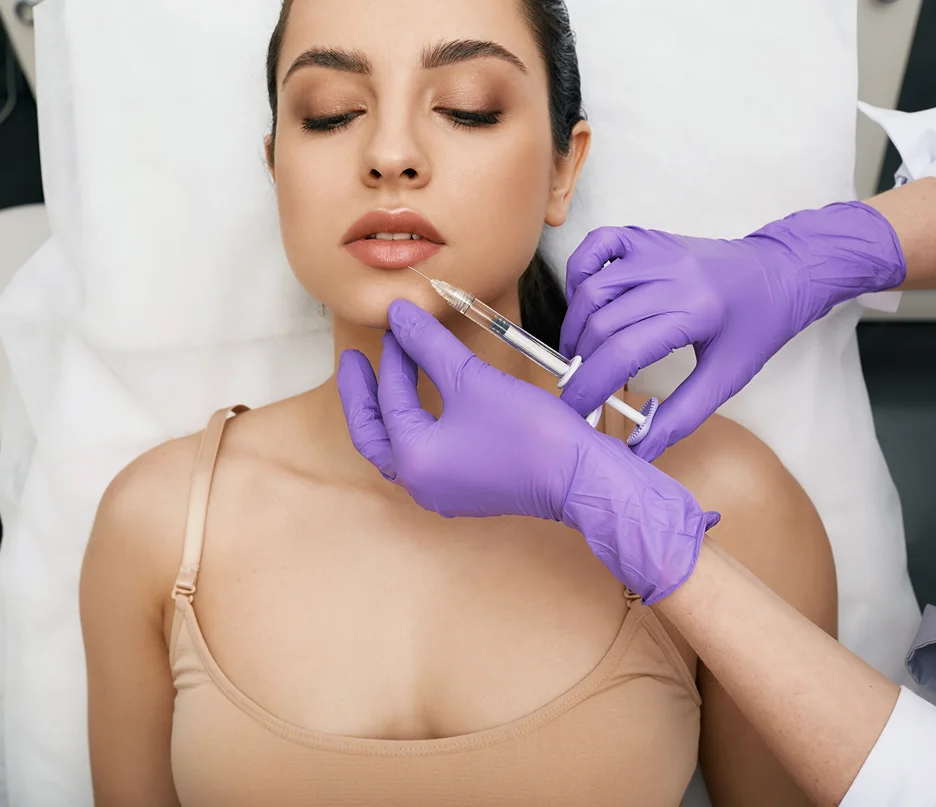
Why does swelling happen after getting lip fillers? It’s a question that surfaces in the minds of many who opt for this cosmetic treatment. Let’s break it down.
Swelling is your body’s natural response to the lip filler procedure. When a foreign substance (in this case, the filler) is introduced into the body, there’s a chain reaction.
The body recognizes the trauma caused by the injection and responds immediately. The immune system springs into action, directing an influx of fluid and white blood cells to the area. This, in essence, is a protective move, a defense mechanism, if you will.
Now, let’s consider the lips specifically. They aren’t like other parts of the body. The lips are densely packed with blood vessels, making them more susceptible to pronounced inflammation. When fillers are introduced, the swelling tends to be more evident here than in other regions where fillers might be used.
Practically speaking, the most noticeable swelling will set in within the first 24 to 48 hours post-procedure. However, this is temporary. In most cases, it begins to wane and should generally dissipate within 2 weeks of the treatment.
Several factors influence the degree of swelling: the technique of injection, the inherent texture of the lip tissue, the type of filler used, its precise placement, and the volume of filler injected.
Introducing Arnica: Nature’s Answer to Inflammation
What is Arnica?
Arnica is a perennial herb recognized for its vibrant, daisy-like flowers. Native to regions of Europe and Asia, this plant boasts a rich history in traditional medicine, primarily due to its innate capacity to mitigate inflammation and bruising.
How does Arnica work?
Getting into the core functionality of arnica, this plant is loaded with roughly 150 bio-active components. These elements grant it anti-inflammatory and antiseptic properties, making it a popular choice for those looking to address swelling and discomfort.
When arnica-based products like creams or gels are applied to the skin, they actively boost circulation. This, in turn, triggers the body’s natural healing mechanisms, often leading to quicker relief.
Yet, it’s essential to approach arnica with a touch of caution. The herb contains helenalin, a compound that can be toxic if consumed in high amounts. Its anticoagulant nature means it can impede the clotting of open wounds, a factor to consider before use.
How Can You Use Arnica for Lip Fillers?
If you’ve recently treated yourself to lip fillers or are thinking about it, you’re probably gearing up for the aftercare phase. Among the tools in the recovery kit, arnica often stands out. If this is your first time hearing about it, you’re in for a treat.
Your 5-Step Guide with Arnica Cream After Lip Fillers
- Cool it Down: Think of the first 24-48 hours as the ‘cold compress’ phase. Intermittently dabbing a cold press against your lips can be a game-changer in reducing that initial swelling and bruising.
- The Arnica Step: Once you’ve got your hands on some arnica topical cream, apply it according to its label’s directions. Or better yet, if your healthcare professional gives you the green light, go with their recommendation.
- Skip the Heat: For now, at least. While a hot bath sounds dreamy, it’s best to wait it out for a couple of days. Also, steam baths, saunas, and intense workouts? Excessive heat can amplify swelling. Let’s put them on hold.
- Stay Quenched: Hydrate, hydrate, hydrate. Drinking ample water and enjoying hydration-packed fruits and veggies can be beneficial for your healing lips.
- Elevate as You Snooze: When it’s bedtime, prop up those pillows. Sleeping with your head a tad elevated can be a simple trick to keep swelling in check.
Are There Other Methods of Using Arnica for Lip Fillers?
Apart from the topical creams and gels, arnica can also be taken orally, typically in tablet form.
Some folks begin their arnica regimen a few days before their filler appointments, especially if they’re prone to bruising or bleeding. This proactive step might help reduce the aftermath of those lip-enhancing sessions.
Remember, while arnica creams are meant for external use, if you’re considering going the oral route with tablets, there’s a catch. Only consume arnica in homeopathic dilutions, as it can turn toxic in large quantities. Safety first!
The Upside of Using Arnica with Lip Fillers
Diving into the world of lip fillers can be both exhilarating and nerve-wracking. But hey, let’s talk about a nifty little natural aid that might just be the friend your lips need post-procedure: Arnica.
Less Bruising, More Smiling: One of the most common after-effects of lip fillers is bruising. But, arnica, with its natural anti-inflammatory properties, steps in to combat this. The result? Lessened bruising and reduced puffiness.
Swift Recovery: We all love a quick bounce-back, don’t we? With arnica in your corner, you might just find that recovery post-fillers feel a tad faster. It plays a role in toning down inflammation and giving healing a gentle nudge.
A Touch Lighter on Pain: While beauty procedures come with their fair share of discomfort, arnica might help take the edge off that post-filler tenderness.
Let Those Lips Shine: Beyond just recovery, it’s about aesthetics, right? Arnica helps ensure that your lips don’t just feel good, but look good too. By dialing down bruising and swelling, it works to enhance the overall appearance of your newly filled lips.
Potential Side Effects of Arnica
While arnica has cemented its reputation as a helpful aid in recovery from various treatments, including lip fillers, it’s essential to approach its use with a well-informed mindset. Let’s delve into some potential side effects associated with arnica:
Skin Irritation: Though generally benign for topical use, some individuals might experience a bit of skin irritation or redness. It’s always wise to do a patch test first.
Stomach Concerns: When consumed, especially in non-homeopathic concentrations, arnica might lead to symptoms like nausea or vomiting. This underlines the importance of using it as directed.
Headaches and Dizziness: Though not widespread, a few individuals might experience headaches or a sense of dizziness after using arnica.
Allergic Reactions: While rare, some people might be allergic to components in arnica. Symptoms could range from mild rash to more severe reactions. If you suspect an allergy, it’s crucial to discontinue use and consult a healthcare professional.
Beyond Arnica: Tactics to Minimize Bruising and Swelling Post Lip Fillers
While Arnica offers promising results in alleviating post-filler concerns, it’s not the only player in the game. Here’s a rundown of some effective strategies to ensure your lips recover smoothly:
1. Cold Compress:
Dabbing your lips gently with a cold compress for intervals of 20 minutes can significantly deter swelling and soothe any immediate discomfort.
2. Take a Short Break:
Postponing strenuous activities for about 24 hours following the procedure will ensure you minimize any potential exacerbation of swelling or bruising.
3. Hydrate:
Consume ample fluids. A well-hydrated body can effectively combat inflammation, setting the pace for a quicker recovery.
4. Choose Pain Relievers Wisely:
Consult your physician about suitable over-the-counter pain medications. While Tylenol might be a go-to for many, steer clear of blood-thinning agents like aspirin or ibuprofen.
5. Incorporate Vitamin C in Your Diet:
Vitamin C isn’t just great for immunity. This powerful antioxidant can mitigate bruising. Incorporate foods like citrus fruits, bell peppers, strawberries, and kiwis into your meals.
6. Sidestep Smoking and Alcohol:
Both can prolong the healing process. It’s best to refrain from them to reduce the chances of extended bruising or swelling.
7. Prioritize Sleep:
Never underestimate the rejuvenating power of a good night’s sleep. It’s your body’s primary recovery mode, so ensure you’re getting adequate rest.
Bonus Tips:
- Elevate While You Sleep: Positioning your head slightly higher can keep swelling at bay.
- Hold Off on Makeup: Allow your lips a breather from makeup for a few days to avoid potential irritations.
- Hands Off: A simple but effective rule – minimize unnecessary contact with your lips.
Remember, everyone’s body reacts uniquely. While one person might exhibit minimal signs post-procedure, another might experience pronounced bruising. Always stay in touch with your healthcare provider if you have concerns or questions. They’re there to ensure your journey to fuller lips is a comfortable one.
FAQs
What role does Arnica play in the aftercare for lip fillers?
Arnica is a natural supplement commonly recommended after cosmetic procedures like lip filler treatments. When undergoing dermal fillers or filler injections, there’s a possibility of bruising at the injection sites.
Applying topical arnica gel or taking arnica tablets can reduce this bruising, speeding up recovery. Arnica works by improving the flow of blood in the affected area, preventing the accumulation of blood cells that could cause discoloration.
However, always ensure you’re using a quality product and avoid counterfeit products; it’s advisable to buy from reputable sources or ask your clinic for advice.
I’ve heard that certain supplements or medications can interfere with dermal fillers. Is this true?
Absolutely. Blood thinners, fish oils, vitamin E, and other supplements can increase blood flow or have anti-platelet effects, making you more susceptible to bruising after fillers.
Before undergoing any cosmetic injections, it’s crucial to discuss with plastic surgeons or specialists about any medications or supplements you’re on, including natural ones like omega-3 fatty acids from flaxseed oil or bromelain tablets.
Apart from arnica, what other steps should I consider for minimizing swelling after my lip filler treatment?
Swelling is a common side effect after filler treatments. Using cold packs or gently applying an ice cube wrapped in a cloth can greatly reduce initial swelling. Keeping your head elevated, even during sleep, helps reduce the degree of swelling.
It’s also advised to abstain from vigorous exercise for a couple of days post-treatment and avoid alcohol consumption.
Some also suggest eating fresh pineapple or taking pineapple extract supplements, as they contain bromelain which can help reduce inflammation and swelling. But as always, keep everything in moderation and seek professional advice for these alternative treatments.
Can dermal fillers interact with other cosmetic procedures or treatments?
Yes, if you’re considering other cosmetic procedures, especially around the same time as your lip filler, it’s essential to plan wisely.
Treatments like chemical peels or advanced anti-aging procedures might have specific aftercare instructions that can overlap with the aftercare for lip fillers. Always consult with your provider when planning multiple treatments.
Are there any products to help camouflage lip fillers or make my lips feel better post-procedure?
Post filler treatments, many patients turn to specific balms for lip care. Products like the Arnica Lip Mask can be soothing. If you’re aiming to conceal any bruised skin, there are numerous beauty products available in the market designed to offer good coverage without irritating the skin. Always opt for dermatological products that are gentle on sensitive or freshly treated skin.

